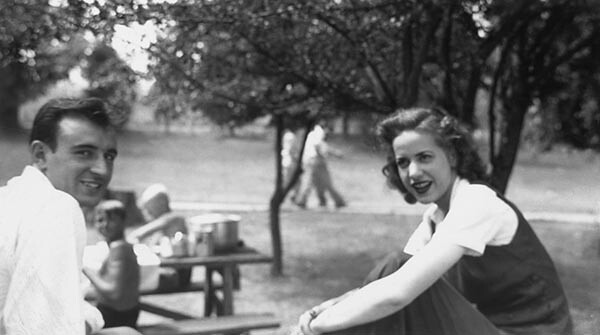As we observe Memorial Day on Monday, please take a moment to remember the men and women who paid the ultimate price during their military service. Here is one story where a crew from the 43rd Bomb Group joined those that we remember each year.
Six B-17s were sent to bomb Vunakanau during the early morning hours of May 21, 1943. There was hardly any antiaircraft fire to evade and mission results were good: fires were seen scattered around the Vunakanau area as they left. Sadly, only four of the six B-17s made it back to base. One of the planes that didn’t return was HONI KUU OKOLE. As the pilot, Capt. Williams, was approaching the target area, a Japanese J1N1 Gekko “Irving” night fighter positioned itself underneath the bombers right wing. The fighter let loose with its 20mm cannon directly into the B-17s right wing. Both engines on the wing burst into flame and the pilot dove in hopes to escape the fighter. Bombardier M/Sgt. Gordon R. Manuel quickly salvoed their bombs as they left the area. When Williams leveled off at 6000 feet, the crew discovered that they hadn’t managed to shake the night fighter, which shot at the B-17 again. This time, both engines on the left wing were hit, putting the plane into a fatal dive.
Soon, the fire spread to the waist section of the aircraft, getting close to the small incendiary bombs stacked on the floor. Crewmembers began preparing to bail out of the doomed aircraft. In total, three of the men were able to bail out of the plane before it crashed and exploded. Manuel opened the bomb bay doors and jumped through the open hatch. As he fell, from his vantage point of approximately 100-200 feet above the water, Manuel saw a second parachute, which he believed belonged to co-pilot 2/Lt. John S. Rippy. He landed about three-quarters of a mile away from Manuel. Sergeant Robert A. Curry, one of the waist gunners, bailed out and made it to shore, only to be captured by the Japanese and executed at Rabaul.

Richard U. Aguirre sits in a park with his wife, Margaret, in this photo taken before he was sent out to the Southwest Pacific. Aguirre was the navigator on HONI KUU OKOLE when it was shot down over the New Britain coastline on May 21, 1943. He did not survive the shoot down. (CZNBJL Collection via FindaGrave)
When Manuel landed, he was about 300 yards from shore. It took him several hours to swim with one broken leg and the other leg filled with shrapnel. When he reached the shore, he buried himself in dead foliage to keep from being discovered by the Japanese patrols, then fell asleep for a couple of hours. Lt. Rippy was not so lucky. After Rippy swam to shore, he was discovered as he slept by Japanese soldiers, who took him onboard a destroyer and executed him.
When he woke up, he began to walk along the beach, eventually meeting some natives that were working on a dirt road. Once he decided that there weren’t any Japanese among the natives, he stepped out from a hiding place and tried to communicate that he was injured. The leader of the village, Pagnkuf, was among the group and luckily for Manuel, he spoke some English.
For eight months, Manuel stayed at different villages as he eluded the Japanese and recuperated from his injuries. During this time, he was also able to send natives on reconnaissance missions regarding Japanese positions and gun emplacements. This information would aid the Allies, and hopefully his rescue as well. It wasn’t until February 5, 1944 that Manuel finally left New Britain on the USS Gato.
Additional details about this story can be found in Ken’s Men Against the Empire, Vol. I.

That is another testament to fine men willing to lay their lives on the line.
LikeLiked by 1 person
The war is dusted with all these small but intense battles to stay alive. Now, they are being dusted over by time.
LikeLiked by 1 person
That’s why we blow the dust off so the stories aren’t forgotten.
LikeLiked by 2 people
How sad, getting out, only to be executed by your captors. Even with the odds stacked against them, they still tried to find a way to get information that could be used by the allies. Such a brave men.
LikeLike
Can’t even imagine what it would have been like to experience such a thing..
LikeLiked by 1 person
Pingback: Announcing the release of Ken’s Men Against the Empire Vol. I | IHRA
Pingback: International Historical Research Associates | Ken’s Men Against the Empire Vol. I is available for pre-order!
Pingback: Remembering those who did not make it home | IHRA